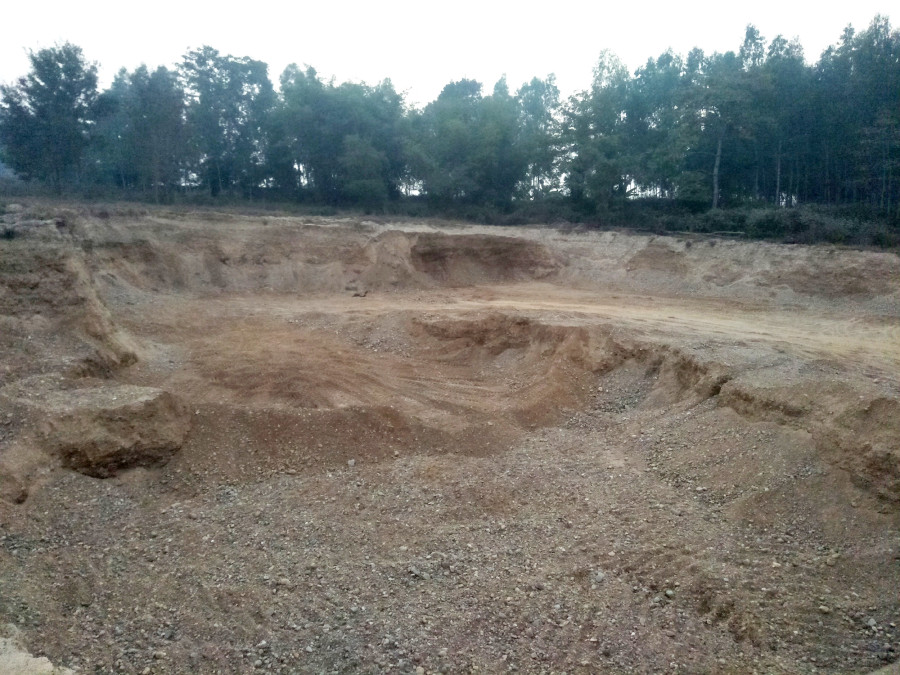Editorial
Crush the crusher mafia
These illegal miners are not above murdering protestors.
It has come to light that crushers and excavators continue to do their part in destroying the environment, even when such activities are illegal in most parts of Nepal. In Province 2 especially, even though there has been a moratorium on the use of crushers in all its eight districts, it has been found that such illegal acts continue unabated. But what is worrying is the authorities’ seeming complicity in the act. If locals are fed up enough to organise and lobby against such activities, and if the media is consistently reporting on the issue, there is no room for excuses as to why the concerned governments—at all levels—have not been able to put a halt to the excavation and extraction.
But stop it they must. The authorities cannot continue to feign ignorance about the matter—the environmental effects of the crushing and excavating industries are far too high. Moreover, the murder of Dilip Mahato in Dhanusha shows how bold the crushing mafia has become. The concerned must act boldly and not allow the mafia to act with impunity.
Unchecked sand and gravel mining along riverbeds makes the rivers sink deeper, which aids in faster erosion of the surrounding land. This, along with rapid urbanisation, puts pressure on the surrounding soil to the extent that the very ground beneath settlements can collapse. Soil erosion caused by unmanaged mining has already started destroying houses alongside the river banks in areas near Pokhara. In 2014, the Soil Conservation Office studied the effects of mining and extraction and found that this was making the region surrounding Pokhara prone to natural calamities like sinkholes, floods and earthquakes.
At the same time, stone crushing also significantly adds to the degradation of the environment. The various operations attached to the industry—which occur not only on riverbeds but also in community forests now—add to the air and noise pollution of a region. The vibrations caused during crushing can further have negative effects far away from the mining site. Besides, the crushing industry severely affects the health of workers and is highly exploitative. Residents of Ramnagar Birta in Mahottari have attested to the devastation that the crushers have caused to the forest and farmlands.
It is the effects of such destruction that led 24-year-old Dilip Mahato to protest against illegal crusher and excavation industries. However, alarmingly, instead of backing down, the excavation mafia was bold enough to murder Mahato in the most horrendous of ways—by trampling him with the use of a truck. It was due to Mahato’s death that all activities attached to stone crushing were banned in Province 2. Riverbed extraction has been prohibited in most parts of the country for much longer. Although some of the conspirators in the Mahato case have been arrested, it seems that the industry itself has not learnt any lessons. Residents of Ramnagar Birta have been receiving death threats due to their complaints.
Minister for Internal Affairs and Law in Province 2 Gyanendra Yadav has promised that an internal investigation is underway. How much of this is true remains to be seen. The sheer volume of extraction, crushing and smuggling—using heavy machinery and huge trucks—makes the authorities’ promises of action questionable. But the people of Province 2 deserve more. Any suspicion of collusion between the miners and local authorities needs to be investigated meticulously. The concerned must investigate thoroughly, and punish all found guilty. The environmental degradation notwithstanding, the death threats should definitely not be taken as posturing: Dilip Mahato’s murder shows what the mining mafia is capable of.
***
What do you think?
Dear reader, we’d like to hear from you. We regularly publish letters to the editor on contemporary issues or direct responses to something the Post has recently published. Please send your letters to [email protected] with "Letter to the Editor" in the subject line. Please include your name, location, and a contact address so one of our editors can reach out to you.




 13.12°C Kathmandu
13.12°C Kathmandu














